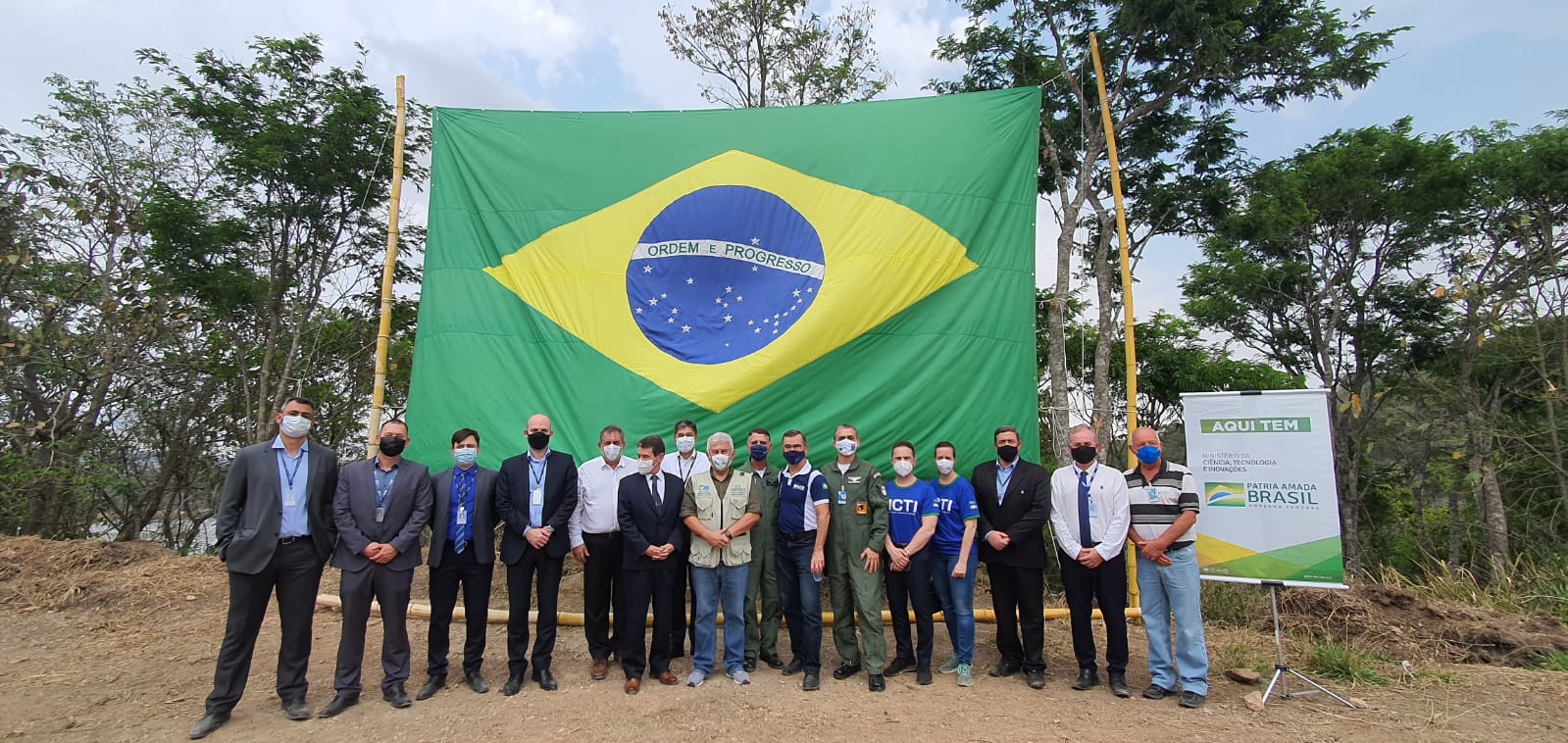- Details
- Published: 05 October 2021
Brazilian Air Force (FAB), through the Department of Aerospace Science and Technology (DCTA), and the Institute of Aeronautics and Space (IAE) technical team, in São Jose dos Campos (SP), performed this Friday (01/10) the first burning test of the S50 rocket motor. Avibras is responsible for the project execution, which is 100% national and financed by the Ministry of Science, Technology and Innovation through its bound autarchy by the Brazilian Space Agency (AEB) and Financier of Studies and Projects (FINEP).
The event was attended by the Minister of Science, Technology and Innovation, Marcos Pontes; DCTA General-Director, Air Force Lieutenant-Brigadier Hudson da Costa Potiguara; Director of Institute of Aeronautics and Space, Air-Brigadier César Augusto O’Donnell Alván; and representatives from Avibras and other organizations that were part of the project, as well as FAB General-Officers, Commanders, Directors and Chiefs of Military Organizations.
For the Minister, this is a historical moment of celebration. “Considering the Brazilian Space Program, it is as if we were now ascending to the second phase. Thanks to the effort of many people we have the possibility to improve the Space Program and expect great news ahead”, he affirmed.
The S50 is the largest rocket motor ever manufactured in Brazil, it has 12 tons of solid propellant and innovative technologies for the Brazilian Space Program, such as the use of carbon fibre in the production of the motor envelope, making it lighter and more effective. The Lieutenant-Brigadier Potiguara commented on the importance of the test. “This moment is historical and meaningful for the Brazilian Space Program. Brazilian nation must to be proud of it. For several years we have been searching for the start of this establishment, a complete circle of launching, and it began with the manufacture of the S50 rocket motor. From now on, we are only a few steps away of our VLM (Microsatellites Launching Vehicle) being able to orbit loads up to 50 kilos”, he affirmed.
The success of this test is crucial for Brazil to move forward in the final phases of the development of the S50 motor, which will provide the country new capacities in terms of production of suborbital vehicles and microsatellites launchers.
The Microsatellite Launching Vehicle (VLM-1) is a Strategic Project of the Brazilian Air Force (FAB) and it aims at the development of a VLM in partnership with the German Launch Centre. IEA Director, Brigadier O’Donnell, commented on the test. “From now on we can walk firmly towards the objectives of the Brazilian Space Program. This work has been done for years and the preparations have begun six months ago, involving dozens of people and 32 teams”, explained the General-Officer.
The first burning test of the motor is a result of a complex and challenging work, which counts with the professionalism of technicians and engineers from IAE and the contracted company. VLM-1 Project Manager, Major Engineer Rodrigo Cesar Rocha Lacerda, celebrates the success of the test. “The campaign marks a very intense work of many years involving IAE and Avibras. This success is essential so that we can go forward with our Brazilian Space Program”, concluded the officer.
“Because it was developed within the scope of the national industry by Avibras, the project strengthens the concept of the triple helix of innovation, serving as an example of the conjunct effort among industry-institute-government for overcoming technological challenges. It also demonstrates Avibras’ expertise in the development of aerospace technologies”, highlighted Avibras Manager of Space Business, Avandelino Santana Júnior.
Source: Information from CECOMSAER










